Linux is a powerful and efficient operating system, but high RAM and CPU usage can degrade performance, slow down applications, and even cause system crashes when you’re running a server, workstation, or embedded system, and optimizing resource usage is essential for smooth operation.
In this guide, we’ll explore practical methods to reduce RAM and CPU usage on Linux. We’ll cover monitoring tools, process management, kernel tweaks, and system optimization techniques to keep your system running efficiently.
1. Identify Resource Hungry Processes
The first step in reducing RAM and CPU usage is identifying which processes are consuming the most resources by utilizing several command-line tools:
a. Using top Command
The top command provides a real-time view of system processes, including CPU and memory usage.
top
- Press
Pto sort processes by CPU usage. - Press
Mto sort processes by memory usage. - Look for processes consuming excessive resources and note their Process ID (PID).
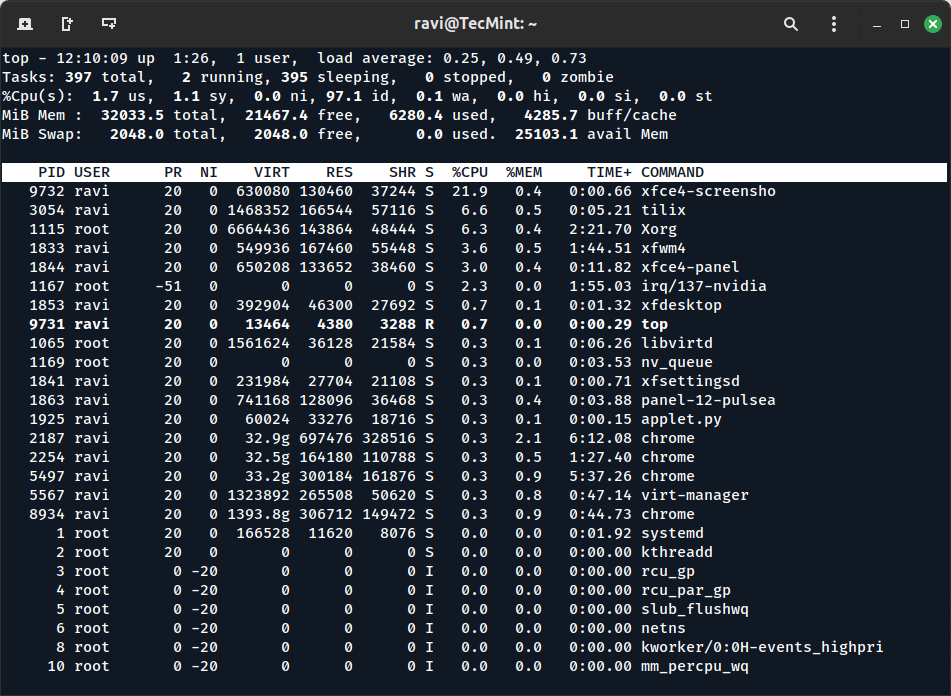
b. Using htop Command
htop is an interactive process viewer that provides a more user-friendly interface than top.
To install htop on Linux, use the following appropriate command for your specific Linux distribution.
sudo apt install htop [On Debian, Ubuntu and Mint] sudo dnf install htop [On RHEL/CentOS/Fedora and Rocky/AlmaLinux] sudo emerge -a sys-apps/htop [On Gentoo Linux] sudo apk add htop [On Alpine Linux] sudo pacman -S htop [On Arch Linux] sudo zypper install htop [On OpenSUSE] sudo pkg install htop [On FreeBSD]
Run htop to view and manage processes easily.
htop
- Press
F6to sort processes by CPU or memory usage. - Press
F9to kill a selected process.
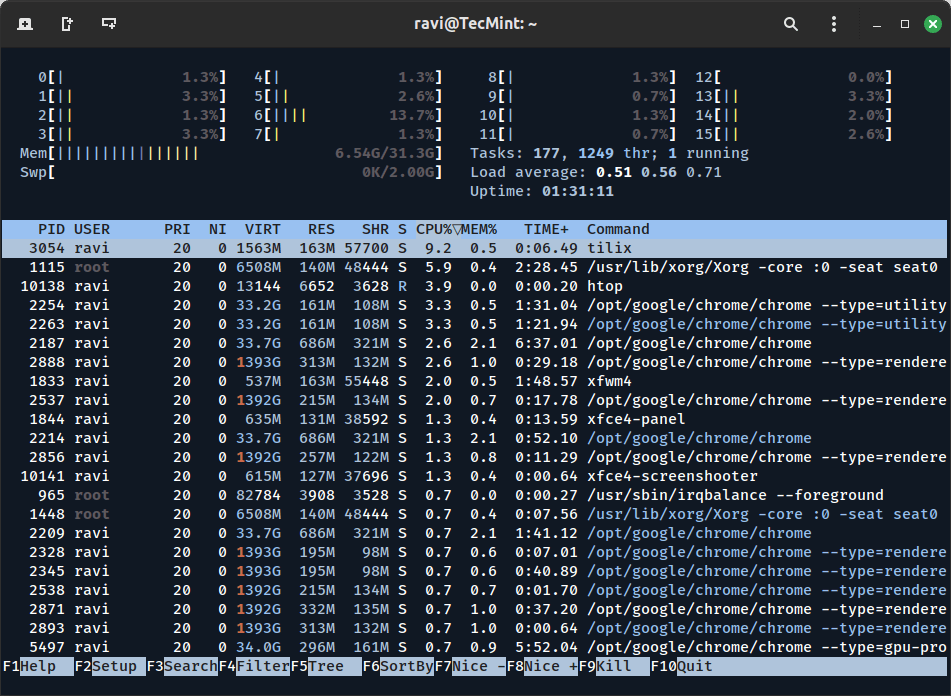
c. Using ps Command
The ps command can be used to list processes and their resource usage.
ps aux --sort=-%mem | head # Top memory-consuming processes ps aux --sort=-%cpu | head # Top CPU-consuming processes

2. Kill Unnecessary Processes
Once you’ve identified resource-hogging processes, you can terminate them to free up resources using the kill command followed by the PID.
kill PID
If the process doesn’t terminate, use the -9 flag to force-kill it.
kill -9 PID
Alternatively, use the pkill command to kill processes by name.
pkill process_name
3. Optimize Startup Applications
Many applications and services start automatically at boot, consuming valuable system resources.
To manage startup applications:
a. Using systemctl Command
List all enabled services using the systemctl command.
systemctl list-unit-files --type=service | grep enabled
Disable unnecessary services.
sudo systemctl disable service_name
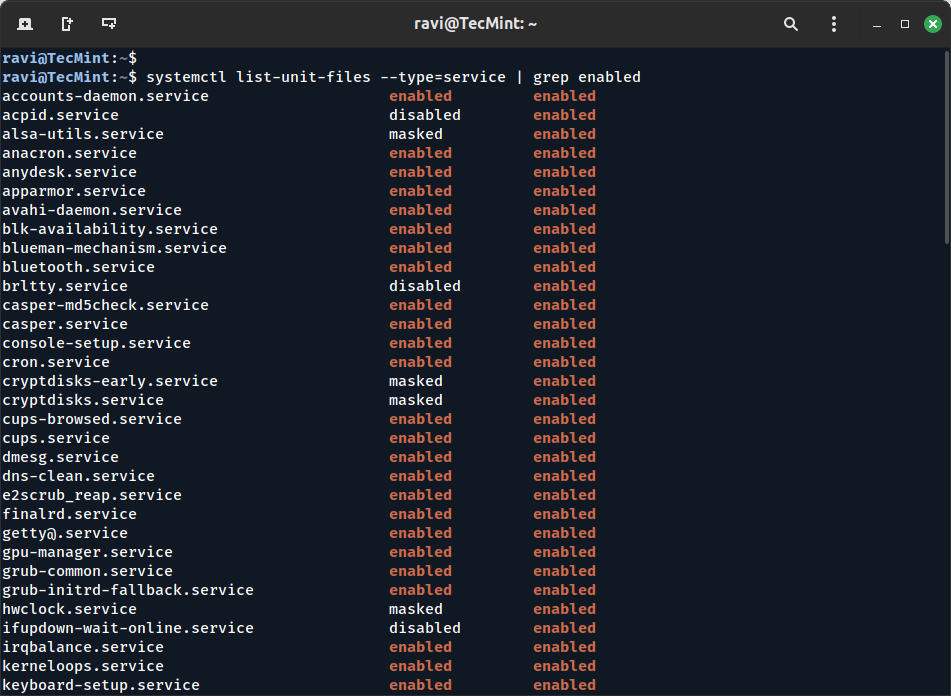
b. Using GUI Tools
If you’re using a desktop environment like GNOME or KDE, use the built-in startup applications manager to disable unnecessary programs.
4. Reduce Swappiness (Optimize Swap Usage)
Swappiness controls how often the system uses swap space instead of RAM. A high swappiness value can lead to excessive swapping, slowing down your system.
To check the current swappiness value:
cat /proc/sys/vm/swappiness
The default value is usually 60, but to reduce swappiness you need to edit the /etc/sysctl.conf file.
sudo nano /etc/sysctl.conf
Add or modify the following line.
vm.swappiness=10
Save the file and apply the changes.
sudo sysctl -p
5. Use Lightweight Desktop Alternatives
Heavy desktop environments and applications can strain system resources, so consider switching to lightweight alternatives:
a. Desktop Environments
Replace GNOME or KDE with lighter options like XFCE, LXDE, or MATE.
b. Applications
Use lightweight applications such as:
- Text Editor: Replace LibreOffice with AbiWord or Mousepad.
- Web Browser: Use Firefox with fewer extensions or switch to lightweight browsers like Midori.
- File Manager: Replace Nautilus with Thunar or PCManFM.
6. Clear Cache and Buffers
Linux uses RAM to cache files and improve performance. However, you can manually clear the cache if needed:
sudo sync; sudo sysctl -w vm.drop_caches=3
This command clears pagecache, dentries, and inodes. Use it cautiously, as it may temporarily slow down file access.
7. Optimize Kernel Parameters
To tune or optimize kernel parameters, you need to edit /etc/sysctl.conf file and add the following or adjust parameters to improve system performance.
vm.dirty_background_ratio=5 vm.dirty_ratio=10 vm.min_free_kbytes=65536 kernel.sched_autogroup_enabled=0
These settings control how often dirty data is written to disk, reducing RAM usage.
8. Reduce Memory Usage with ZRAM
Zram and Zswap are compressed memory technologies that can reduce RAM usage.
sudo apt install zram-config sudo systemctl start zram-config
Once installed, you need to edit the GRUB configuration file (/etc/default/grub) and add:
GRUB_CMDLINE_LINUX_DEFAULT="zswap.enabled=1"
Update GRUB and reboot:
sudo update-grub sudo reboot
9. Limit CPU Usage of Processes
If a process is hogging the CPU, limit its usage using cpulimit.
sudo apt install cpulimit # Debian/Ubuntu sudo yum install cpulimit # RHEL/CentOS
Limit a process (e.g., firefox) to 30% CPU usage.
sudo cpulimit -e firefox -l 30
To permanently limit a process, use systemd.
sudo systemctl set-property <service_name> CPUQuota=30%
10. Regularly Update Your System
Keeping your system updated ensures you have the latest performance improvements and bug fixes.
sudo apt update && sudo apt upgrade # For Debian/Ubuntu sudo yum update # For CentOS/RHEL
Troubleshooting Tips
- If a process doesn’t terminate with
kill, usekill -9 PIDto force-kill it. - If
zramorzswapdoesn’t work, ensure your kernel supports these features. - If system performance doesn’t improve, consider upgrading your hardware (e.g., adding more RAM or switching to an SSD).
Conclusion
Optimizing RAM and CPU usage on Linux is a blend of monitoring, tweaking, and occasionally upgrading hardware. By identifying resource-hogging processes, adjusting system settings, and opting for lightweight alternatives, you can breathe new life into your system.
Have you tried these optimization techniques? Share your experience in the comments below or visit Tecmint.com for more Linux guides and tutorials.

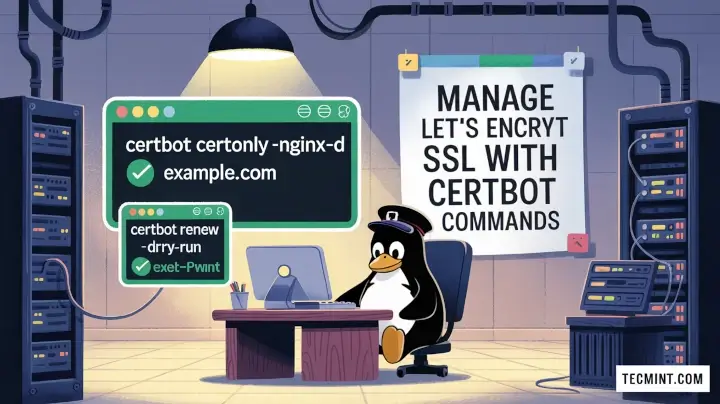
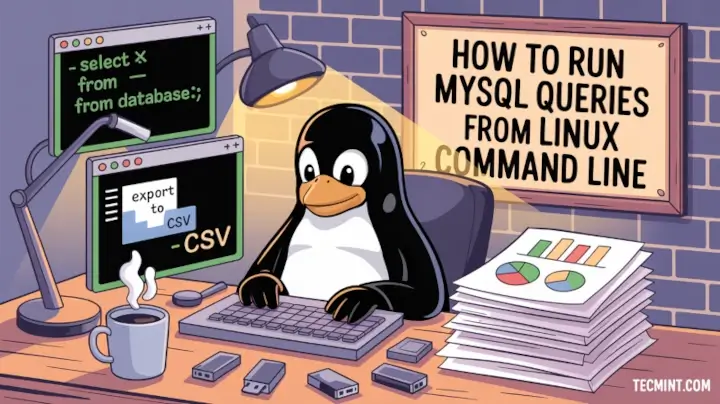

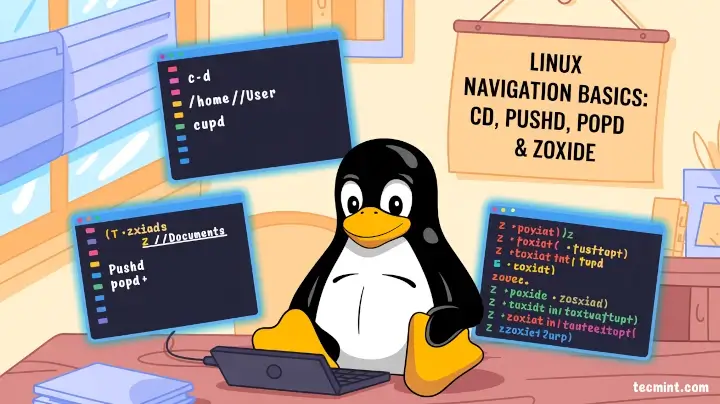
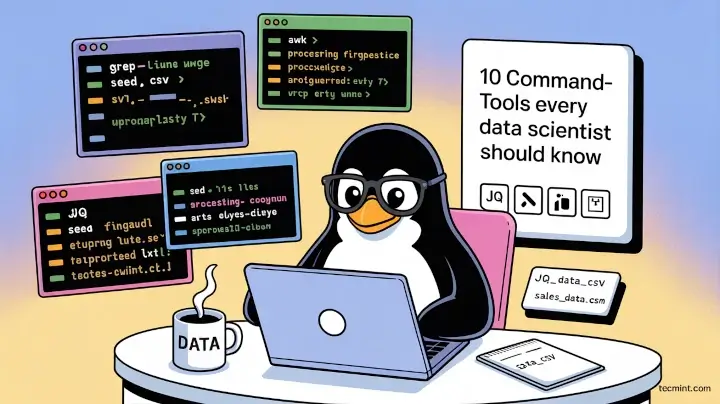
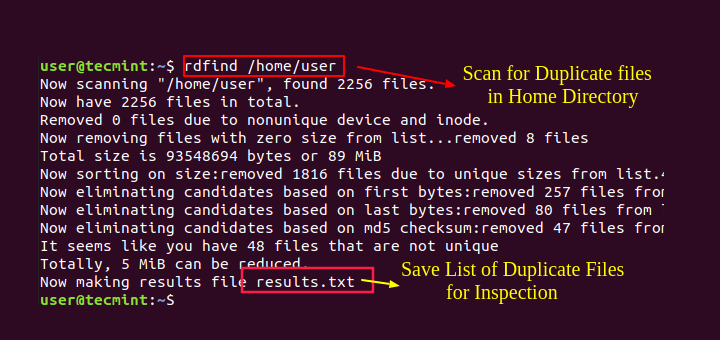
Hi, Very useful article. Thanks a lot.
I have just replaced my old desktop with a mini. Incredible improvement in performance. Makes life bearable again and frees up lots of floor space.
Atop is an ASCII full-screen performance monitor for Linux that is capable of reporting the activity of all processes (even if processes have finished during the interval), daily logging of system and process activity for long-term analysis, highlighting overloaded system resources by using colors, etcetera.
Have a look on Github, for me, it’s by far the best one as regards Linux System monitoring.
https://github.com/Atoptool/atop
@John,
Thanks for your suggestion!
I’ve already covered Atop in a dedicated article on Tecmint, where I go in-depth on its features, installation, and usage. You can check it out here: [How to Install ‘atop’ to Monitor Logging Activity in Linux]
Nice informative blog ☺️ i have been using htop since a while but now i have many choices for now.
@Ajrun,
htop is great, but there are definitely more options to explore. Let me know if you try any new ones and how they work for you!
Thanks for this detailed guide!
I manage multiple Linux servers, and
htop+cpulimithave been game-changers for controlling runaway processes. One thing I’d add is usingniceandionicefor background tasks to prevent CPU hogging.Would love to see a section on that!
htop and cpulimit are great, and you’re right that nice and ionice are essential for managing background tasks without affecting system performance.
For CPU priority:
For I/O priority:
Great article!
I applied the swappiness tweak and disabled a few unnecessary services and my Linux laptop feels much improved now. Do you have any recommendations for reducing Firefox’s RAM usage further? It’s still eating up a lot of memory even with extensions disabled
Glad to hear the tweaks helped! Firefox can still be a memory hog, try these:
Disable disk cache (
about:config→browser.cache.disk.enable→ false).Limit content processes (
about:config→dom.ipc.processCount→ set to 2).Reduce session store writes (
about:config→browser.sessionstore.interval→ 300000).Disable hardware acceleration (Settings → General → Uncheck Use recommended performance settings).
Enable tab unloading (
about:config→browser.tabs.unloadOnLowMemory→ true).These should help lower RAM usage. Let me know if you notice an improvement!
I switched from GNOME to XFCE after reading this, and my system is using way less RAM now. One issue though that after enabling ZRAM, I noticed my swap usage increased slightly.
Is this normal?
Yes, it’s normal to see a slight increase in swap usage after enabling ZRAM. Unlike traditional swap, ZRAM compresses data in RAM before swapping, making it more efficient.
If swap usage seems too high, you can tweak the compression algorithm or adjust
vm.swappinessfurther (e.g., setting it to 5 or even 1) with: